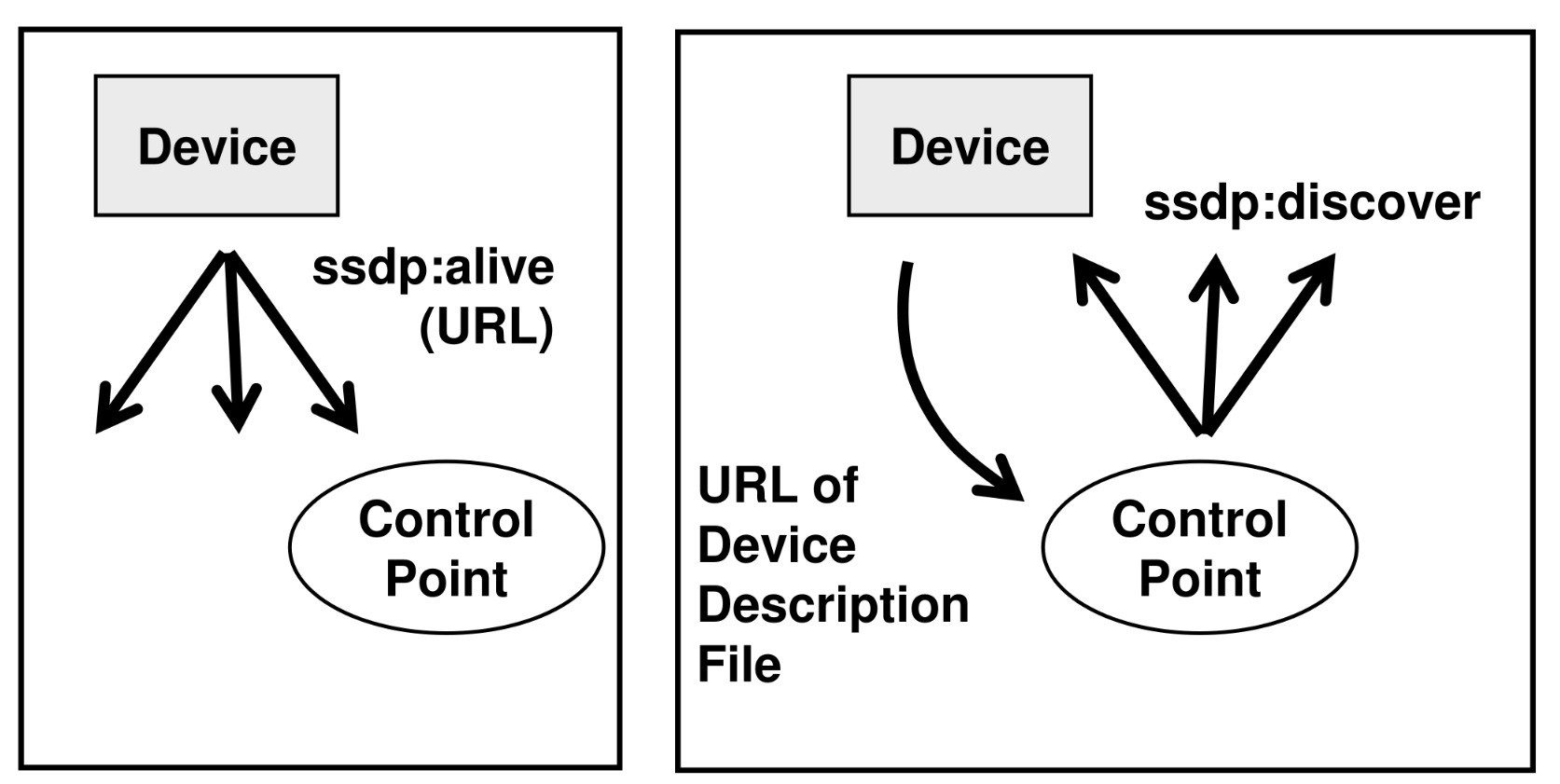SERVICE DISCOVERY
Service discovery is the procedure that allow an application to search for available services in the locality of the application node, a service discovery solution must meet the following requirements
- AUTO CONFIGURATION devices must configure themselves to participate to the the offering requesting communications
- DISCOVERY advertisement of services from the service provider
- ACCESS clients need to be able to communicate with services discovered
APACHE RIVER (JINI)
Java solution for service discovery, based on a central node playing the role of service broker where nodes register and discover services (similar to the sub model)
flowchart TD subgraph service_provider C[java service object] D[service attributes] C ~~~ D end subgraph client E[java service proxy object] end subgraph service_broker A[java service proxy object] B[service attributes] A ~~~ B end client <--> service_provider client --> service_broker service_provider --> service_broker service_broker --> client service_broker --> service_provider
The protocol relies on service providers registering a proxy object to the service broker that can be received by clients in the discovery phase in order to communicate with the service provider
Failures are managed trough a lease mechanism where the resource assigned to client has a lease time, also the registration phase is managed with lease
The protocol supports scalability by allowing the service providers to subscribe to multiple service brokers and
STUB SKEL LIMITATIONS
JINI overcomes stub and skeleton limitations, cause client can get the proxy objects at runtime from the broker
SERVICE LOCATION PROTOCOL (SLP)
service agents makes periodic broadcast of the available services and user agent listen for the request for the application, optionally a directory agent can be deployed for caching purposes
flowchart TD E((application)) F((service)) E <--> C F <--> A subgraph infrastructure A[SERVICE AGENT] B[SERVICE AGENT] C[USER AGENT] D[DIRECTORY AGENT] C --> A A & B --> D D --> C end
UNIVERSAL PLUG AND PLAY (UPnP)
De-facto standard of service discovery, microsoft developed solution to connect tv remote to the network, the UPnP supports:
- Automated IP configuration
- Discovery of resources and services
- Description of resources/services based on XML
- Service control based on SOAP
- Event management (via Generic Eventing and Notification Architecture - GENA)
- Presentation in HTML/XML
AUTOMATIC IP CONFIGURATION
A UPnP node tries to connect to a network by asking a DHCP server an address, if no DHCP server is available it selects a random ip (169.254.0.0/16 for IPv4) in a range and exploits ARP requests to verify if other machines have the same address
DISCOVERY
DIscovery in UPnP is achieved with the simple service discovery protocol (SSDP*), that uses multicast communication on specific addresses and ports over UDP (239.255.255.250 on port 1900)
Nodes that offer services perform periodic broadcast communications on the network, a node that ask for services perform a discover communication and a service can respond with a unicast communication with the url and xml descriptor of the resource

SERVICE REPRESENTATION
The capabilities of a device are communicated trough XML format, a device can offer different <service> capabilities that includes:
- Service type and service ID
- Service URL for invocation via SOAP
- URL for event subscription to enable notifications
- An additional file (Service Description File) for any offered service, with more specific and detailed descriptions
an example of file:
<serviceList>
<service>
<serviceType>urn:schemas-upnp-org:service:control:1</serviceType>
<serviceId>urn:upnp-org:serviceId:control</serviceId>
<controlURL>isapictl.dll?control</controlURL>
<eventSubURL>isapictl.dll?control</eventSubURL>
<SCPDURL>projector-scpd.xml</SCPDURL>
</service>
</serviceList>COMMAND CONTROL
In order to send commands to a UPnP able device a SOAP request is performed with an XML payload to describe the request, service updates the resource and respond with a SOAP reply
EVENT MANAGEMENT
A control node can subscribe to event to the URL specified in the service discovery phase, notifications are delievered trough the use of General Event Notification Architecture (GENA) standard, that includes in the XML request the variable modification that triggered the event
A node can only subscribe to the notification of single state variable change
sequenceDiagram participant ControlPoint participant Device ControlPoint->>Device: Multicast search Device->>ControlPoint: Notification in UDP unicast ControlPoint->>Device: HTTP request over UDP for descriptor Device->>ControlPoint: RESPONSE ControlPoint->>Device: HTTP over UDP SUBSCRIBE to events Device->>ControlPoint: HTTP response with SID ControlPoint->>Device: HTTP POST request over SOAP for resource modification Device->>ControlPoint: HTTP over SOAP response Device->>ControlPoint: Notification with GENA in unicast